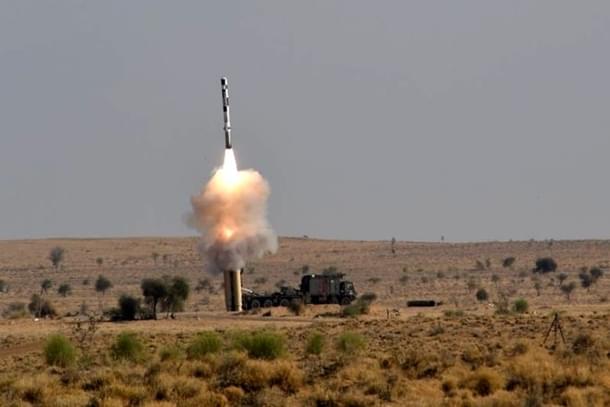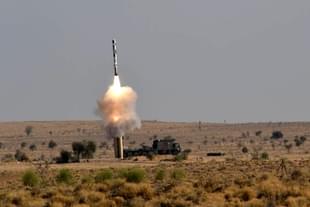Insta
India Deploys BrahMos, Nirbhay Cruise Missiles To Hit China In ‘Worst Case Scenario’; Akash SAMs To Shoot Down Its Drones, Fighters: Report
Swarajya Staff
Sep 28, 2020, 02:23 PM | Updated 02:29 PM IST
Save & read from anywhere!
Bookmark stories for easy access on any device or the Swarajya app.


India has deployed BrahMos and Nirbhay cruise missiles and Akash surface-to-air missiles (SAMs) to deter Chinese misadventures in eastern Ladakh, where the two countries are locked in a standoff, Hindustan Times reports.
India has deployed these missiles to deal with Chinese deployments of stand-off weapons with the range of 2,000 kilometers on the Tibetan Plateau.
The 500 km-range BrahMos cruise missile, deployed in “sufficient numbers” in the Ladakh Sector, can be used to hit People’s Liberation Army camps and air bases in the region if hostilities escalate. The supersonic missile, which can evade enemy defences, is capable of dropping a 300 kg warhead on its target.
The BrahMos missiles can also be fired towards Chinese targets from within Indian air space using Su-30MKI fighters of the Indian Air Force, which have been modified to carry the air launched version of the cruise missile.
A “limited number” of Nirbhay cruise missiles, which have a range of about 1,000 kilometers, are also being used to deter the Chinese. With its skimming and loitering capability, the Nirbhay missile can fly as low as 100 meters above the ground to evade the enemy’s defensive measures against missiles.
Given its relatively long range, the subsonic missile can be used to hit Chinese targets in depth areas on the Tibetan Plateau under Chinese occupation.
Akash SAMs, capable of engaging incoming enemy threats in the air at a range of 40 kilometers, is guarding important Indian military installations and bases in the Ladakh region. The missile can shoot down enemy drones, helicopters and fighter aircraft trying to breach Indian airspace to hit Indian positions.
The Akash missile system, using its Rajendra radar, a passive electronically scanned array radar, can track 64 enemy targets such as drones and helicopters at a time and simultaneously engage at least 12 of them.
Over the last few months, the People’s Liberation Army Air Force has not only deployed a large number of fighters and helicopters in the region but also significantly upgraded infrastructure at its air bases on the Tibetan Plateau.





